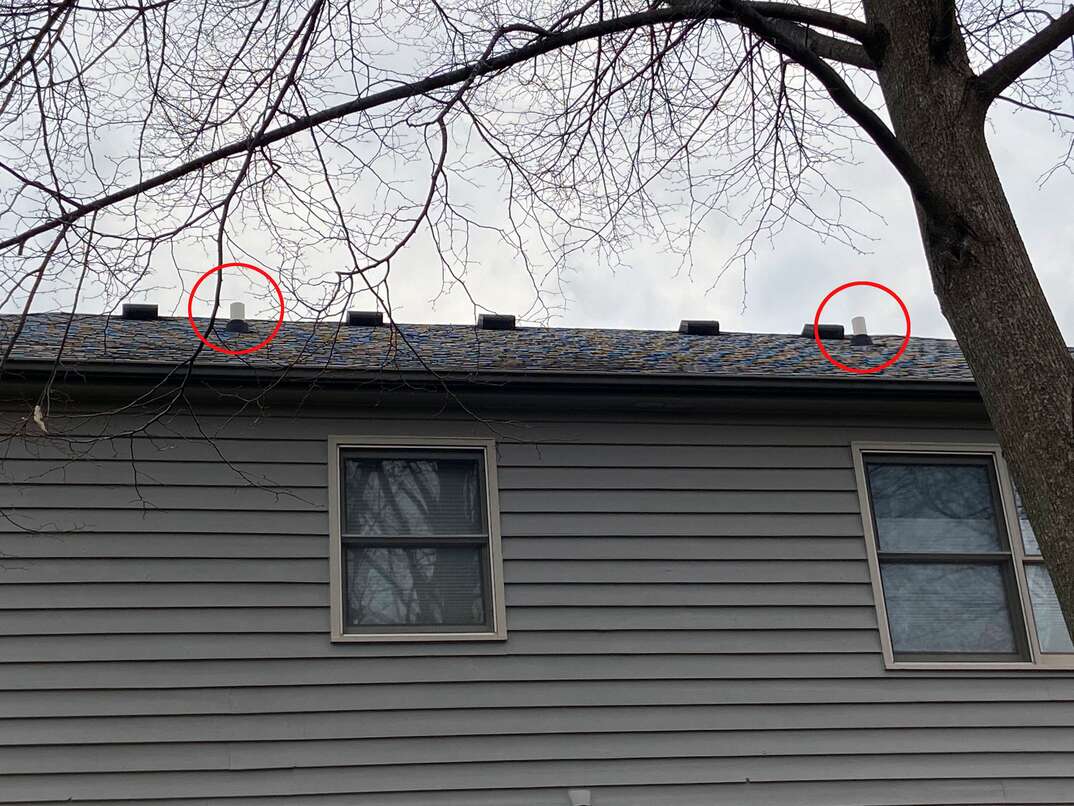5 Things You Should Know About Your Plumbing Vents

You can probably point out the heating, ventilation and air conditioning vents in your home — but could you do the same with your plumbing vents? It’s okay if you can’t; they’re likely hidden in the walls, and the main stack sits on your roof. Plumbing vents ensure that you and your family don’t have to worry about toxic gas and odors backing up into your house.
This May Also Interest You: 15 Plumbing Problems Every Homeowner Needs to Watch Out For
Most homeowners don’t even know their homes have plumbing vents, let alone how to tell when something has gone wrong with them. Here are five things you should know about plumbing vents.
What Is a Plumbing Vent?
Because they’re located behind the walls of your home and rarely have issues that require your attention, many homeowners are unaware of their plumbing vents. A lot of these vent pipes go out through the attic and are tied to the sewer system located in the walls of the home.
Basically, these vents give sewer gas an exit route. As long as there is water in the P-traps — the bends in the pipe — plumbing vents work to keep the sewer gas from leaking out through the sink or toilet. If you’ve ever noticed that telltale smell inside your house, it may have been caused by issues with the plumbing vent.
What Do Plumbing Vents Do?
The main purpose of plumbing vents is to keep sewer gas from leaking. Plumbing Dynamics explains that vents help regulate air pressure in the plumbing pipes so that water can flow correctly through the system. Drain waste vent systems achieve this by letting oxygen into the waste pipes, allowing bacteria to break down the sewage.
Plumbing vents maintain air pressure on both sides of the P-trap. Without equal pressure here, water would be pulled toward the end with less pressure. As water flows, pressure can build. A buildup of too much pressure can cause wastewater to back up through fixtures and drains.
Types of Plumbing Vents
There are several different kinds of plumbing vents, each serving a different purpose. According to Eyman Plumbing, Heating and Air, there are four types of plumbing vents:
True Vent
A true vent is a vertical pipe that attaches to your drain line and vents from the roof. This is the most common type of vent.
Common Vent
A common vent is typically used between two fixtures that are on different sides of the same wall, like sinks that sit back to back. Because the fixtures are so close, they can be connected to the main vent stack with a single cross.
Re-Vent Pipe
Also called an auxiliary vent, this type attaches to the drain line closest to the fixture, then runs up and over to meet with the main stack that vents at the roof.
Air Admittance Valve
These valves typically vent multiple fixtures. The valve opens as wastewater drains, letting air in. Gravity stops gasses from leaking out.
More Related Articles:
- How to Fix Common Plumbing Leaks
- 4 Ways You Can Fix a Broken Pipe
- Prevent Frozen-Pipe Problems By Knowing These Things Down Cold
- Plumbing Repair Cost Guide
- 6 Common Reasons Why Your Toilet Won’t Flush
Why Are Plumbing Vents Important?
Just because you may not notice your plumbing vents doesn’t mean they aren’t important! They play a huge role in keeping your plumbing system running smoothly, ensuring that your family is protected from potentially harmful gasses. Plumbing vents also help regulate the air pressure in your pipes, preventing nasty backups of wastewater.
According to the U.S. Occupational Safety and Health Administration, sewer gas — also called hydrogen sulfide — can irritate the mucus membranes (eyes, nose, mouth) and respiratory system. Prolonged exposure or exposure in a confined area can be especially harmful.
Signs There’s Something Wrong With Your Plumbing Vents
These vents are designed to operate under a large workload and can go a long time without repair. They are, however, prone to blockages which can result in sewer gas leaking into your home. The vent sits on your roof, so it may become blocked by leaves, small animal nests or other debris. Pressure builds in a blocked vent. If left untreated, it may get to the point where nothing — water nor gas — can move through.
According to Express Sewer and Drain, here are some signs you may be dealing with a blocked vent:
- Gurgling sounds coming from the drains
- Sewage odor
- Standing or slow draining water in the sink or bathtub — especially if traditional methods of unclogging don’t work
As you can see, a blocked vent carries many of the same warning signs as a clogged drain. If simple fixes like the baking-soda-and-vinegar method or snaking the drain don’t work, you’ll want to call a plumber before you do damage to pipes that may not even be clogged. Similarly, don’t try to clear the vents yourself. You might accidentally release the backed-up gas. Your best bet, in this case, is to get assistance from an experienced plumbing professional.
Since we’re all home now more than ever, being prepared for unexpected home repairs with a plan from HomeServe is important. Having a plan in place gives you peace of mind knowing that you can simply call our 24/7 repair hotline for covered breakdowns. See what plans are available in your neighborhood.

